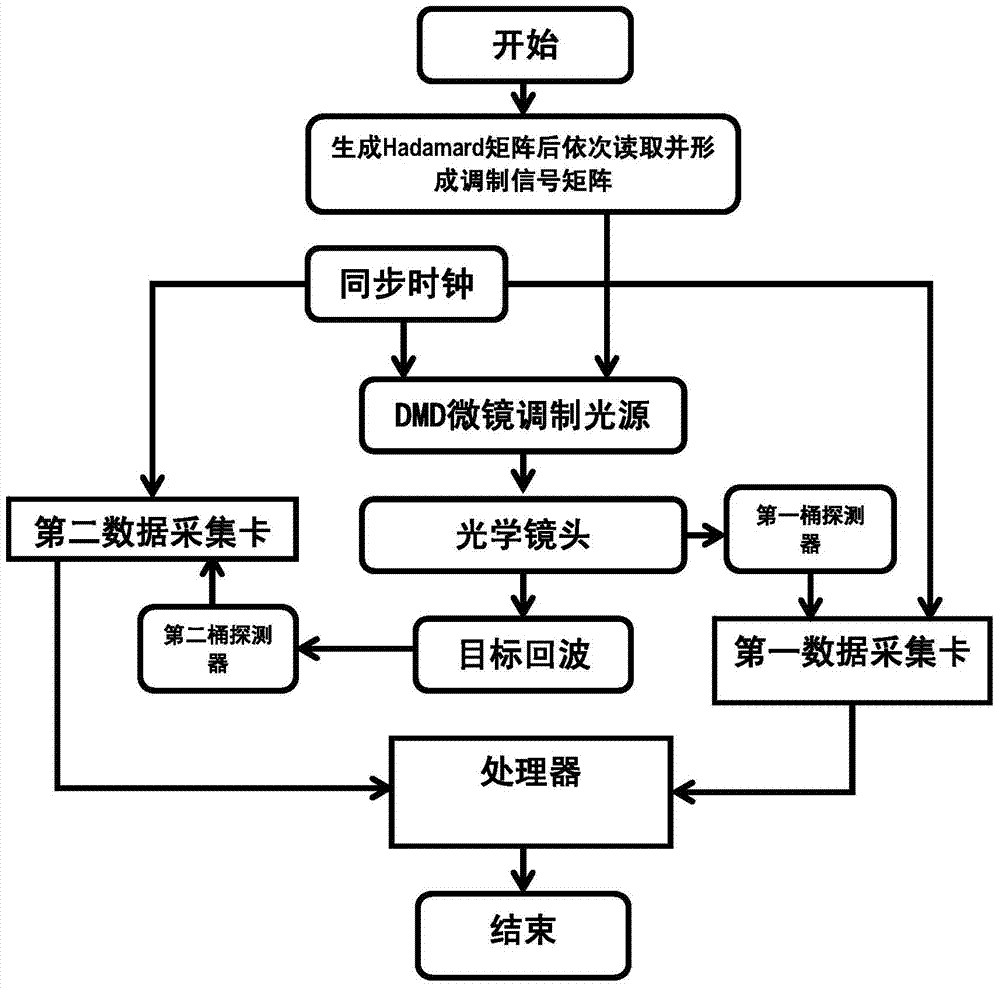High-signal-to-noise ratio quick intensity correlated imaging method
An intensity correlation, high signal-to-noise ratio technology, applied in the direction of measuring devices, instruments, scientific instruments, etc., can solve the extremely high frame rate and data transmission rate requirements of the camera, the intensity correlation imaging cannot reach the practical level, and cannot be solved in real time and Parallel and other issues to achieve the effect of overcoming bad weather imaging, high signal-to-noise ratio, and fast imaging speed
- Summary
- Abstract
- Description
- Claims
- Application Information
AI Technical Summary
Problems solved by technology
Method used
Image
Examples
Embodiment Construction
[0017] The invention discloses a high signal-to-noise ratio rapid intensity correlation imaging method comprising the following steps, such as figure 1 Shown:
[0018] 1) According to the Hadamard coding principle, the modulation matrix M with M rows and M columns is generated by using the Walsh-Hadamard transformation principle 2 =(P * Q) * (P * Q). The specific implementation process is: extract the M in the first row (or column) of the Hadamard matrix * 1 element and normalized, and then extract the 1st to Pth elements as the modulation signal matrix H 1 The first row, the P+1th to 2Pth elements are used as the modulation signal matrix H 1 The second line of ,,, (Q-1) * P to P * Q elements as the modulation signal matrix H 1 The Q-th row, forming the modulation signal matrix H of P rows and Q columns 1 , where P * Q=M is the total number of pixels in the light field of the modulated light source, and the highest resolution is the area of a single DMD micromir...
PUM
 Login to View More
Login to View More Abstract
Description
Claims
Application Information
 Login to View More
Login to View More - R&D
- Intellectual Property
- Life Sciences
- Materials
- Tech Scout
- Unparalleled Data Quality
- Higher Quality Content
- 60% Fewer Hallucinations
Browse by: Latest US Patents, China's latest patents, Technical Efficacy Thesaurus, Application Domain, Technology Topic, Popular Technical Reports.
© 2025 PatSnap. All rights reserved.Legal|Privacy policy|Modern Slavery Act Transparency Statement|Sitemap|About US| Contact US: help@patsnap.com

